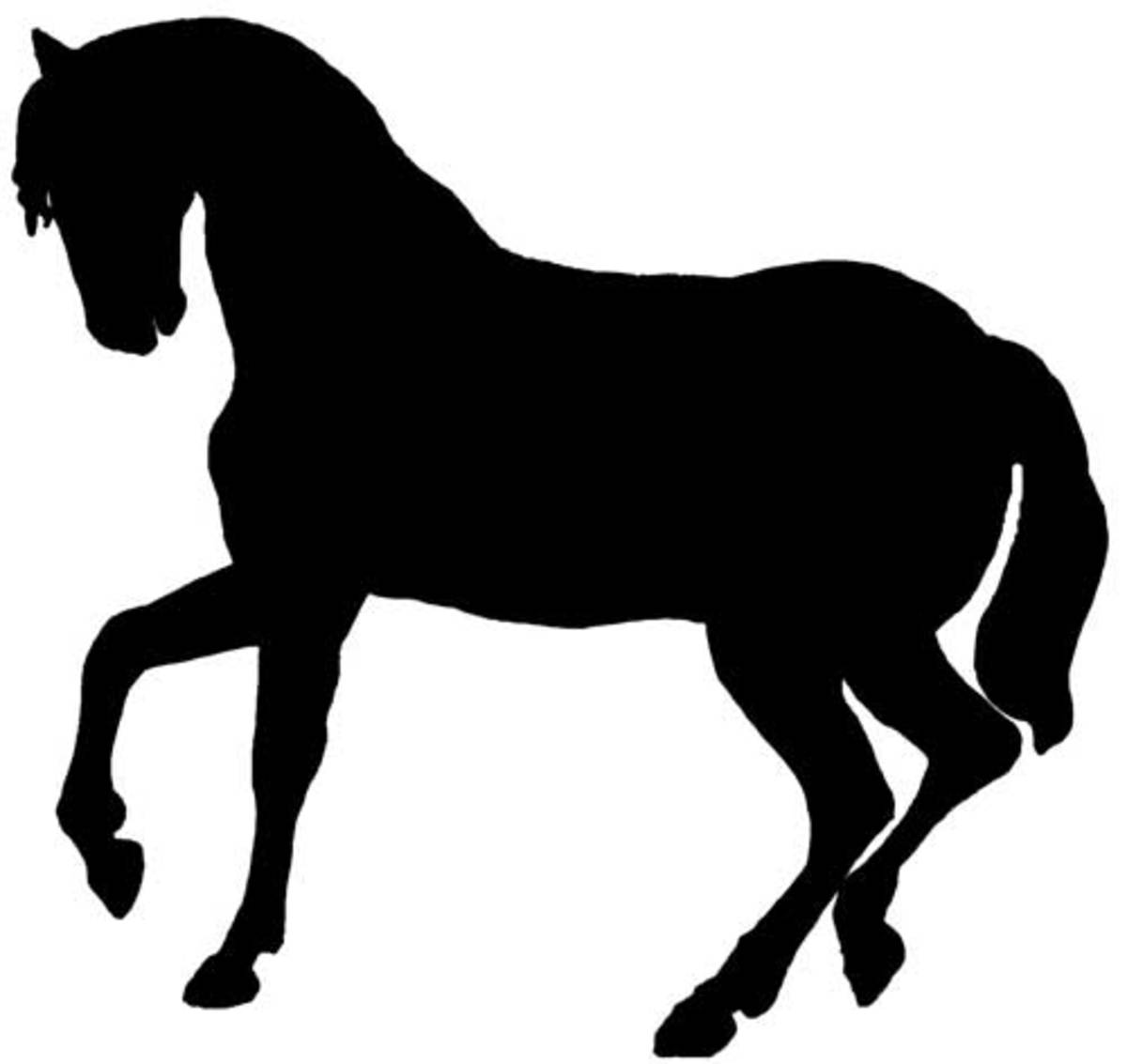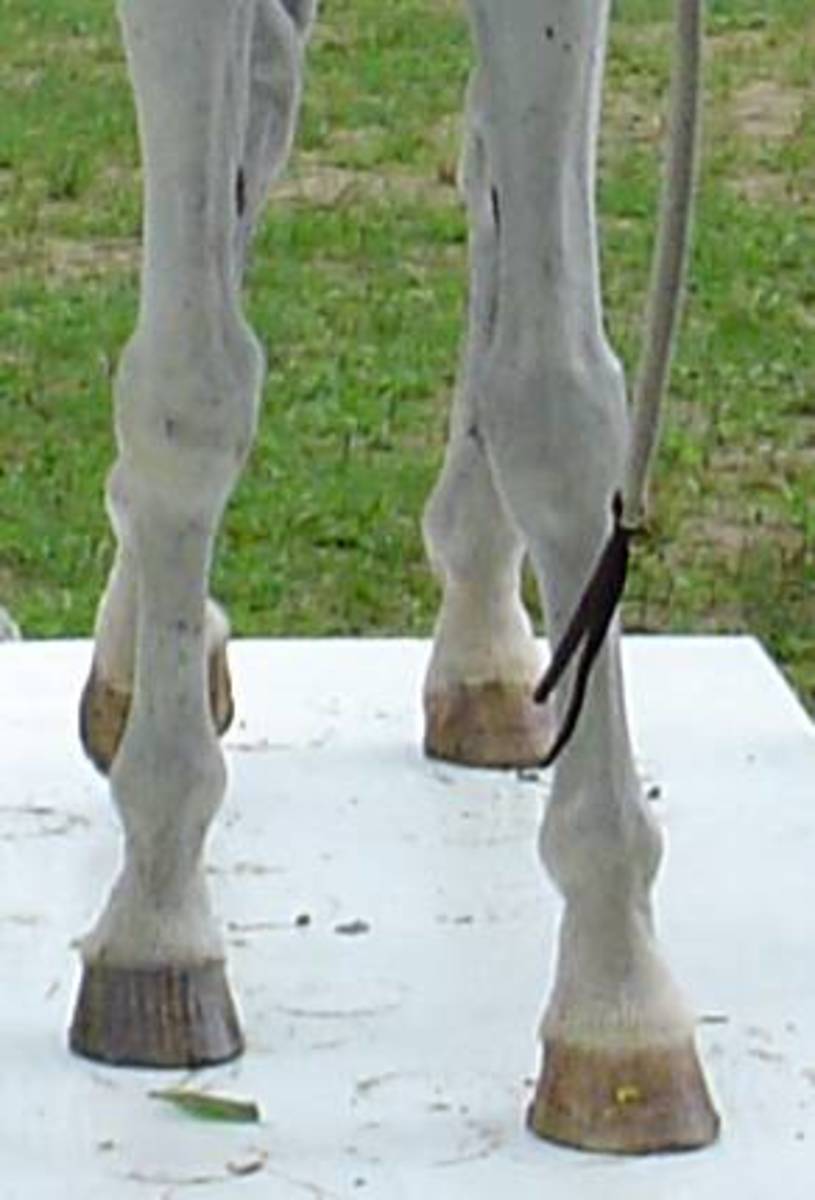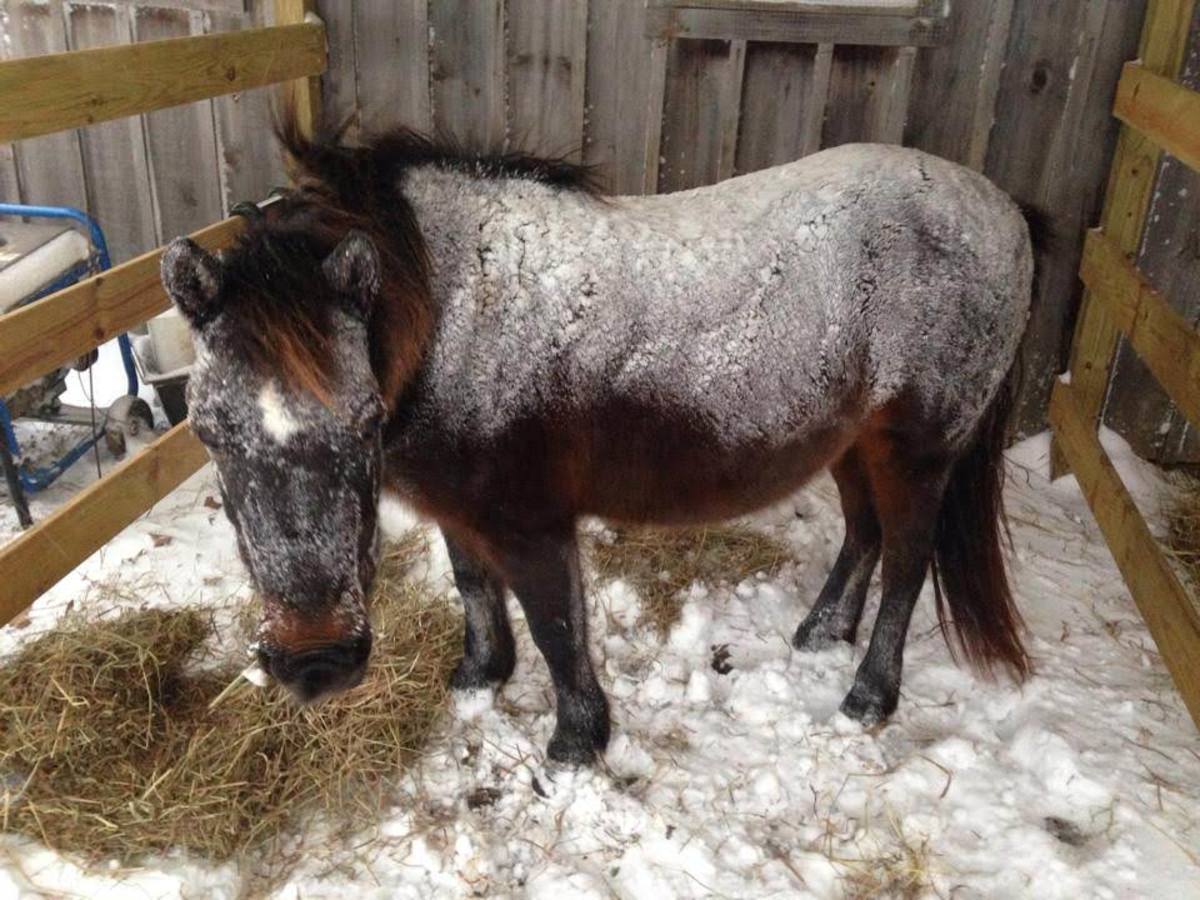Wounded Horses
According to Horses and Horsemanship by M.E. Ensminger, horses are more accident prone than any other class of domestic animal. Even the most careful owner will at one time or another need to treat his horse for some type of wound.
There are six kinds of wounds: abrasions, contusions, incisions, lacerations, punctures and burns. When deciding how to treat your horse's wound you must first identify the wound and evaluate its seriousness.
An abrasion is a superficial scrape or burn, which scabs over as it heals. First, clean this kind of wound with warm soap and water, and then apply an antibacterial salve like furazone to keep it softened. Also wipe on a fly repellent around the wound, or bandage it when possible to keep the insects from irritating the area. There are good products on the market that have both the medication and insect repellent together.
Contusions are bruises or swellings that have no external opening or drainage. Immediately apply a cold compress to reduce the swelling. Call a vet if the swelling is severe or appears to be a hematoma. In that case the vet may need to drain the blood from the swelling. He may also prescribe an anti-inflammatory drugs to reduce swelling.
Incisions are cuts with a clean edge. An incision usually heals well. Keep the wound clean with mild soap or saline solution. A bandage will prevent insect irritation. If it is a deep incision your vet may decide stitches are needed and prescribe antibiotics.
A laceration is a wound with ragged, torn edges, like that caused by barbed wire. Clean it and apply an antiseptic or antibacterial agent. These are sold in ointment, liquid, powder and gel form. Again, if it is a deep wound your vet may give your horse some antibiotics, and stitches may be required.
Puncture wounds are deeper than wide, making it harder to keep clean. Three types of punctures include one that penetrates into the body cavity, a perforation that goes into the flesh and back out again, and a stab, which is a deep tissue wound. One reason the puncture wound is dangerous is because of the tetanus bacteria, which lives in anaerobic (without oxygen) conditions. The puncture wound is an ideal environment for these bacteria. It is extremely important that your horse be up to date with his tetanus shots. Hydrogen peroxide can be used to flush the wound, which will clean it and get air into the wound. Antibiotics in the wound and given as an injection will probably be prescribed as well.
First Aid for wounded horses
Burns
Burns are wounds caused by friction, heat, electrical shock, frostbite, or chemicals. The severity of a burn can range from a minor rope burn to death as in the case of electrocution. Minor burns should be kept clean and treated with furazone ointment. Major burns need veterinarian attention.
One of the dangers in burns is lose of fluids, especially if the burn involves over 10 % of the horses body. Severe burns can lead to shock. Your vet may have to administer IV fluids. You can cover your horse with a wet sheet or towels to prevent fluid lose.
All wounds heal in one of two ways, by primary intention or granulation.
When the edges of a wound heal together with little or no infection or scaring that is called primary intention. This is the way we want wounds to heal.
The less desirable healing is granulation, or "proud flesh". This is when small masses of tissue form in the wound. This tissue is made up of capillaries and connective tissue cells. This type of healing usually occurs when there is a lot of tissue damage in the wound, the wound becomes infected, or a harsh antiseptic is used on the wound such as iodine. There are several products on the market for treating proud flesh, and if caught early these work. I severe cases the vet sometimes will remove the tissue surgically.
The primary first aid for treating a serious wound is stopping the bleeding. Use a pressure bandage or hold a towel tightly against the wound, until the vet arrives. Never use a harsh medicine on any wound. Your vet will tell you it is important to keep the wound clean and free of flies.
Bandaging will help keep the wound clean and free of insects. The bandage should never be left on longer than twenty-four hours at a time. Remove daily and examine the wound for swelling and infection. Keep the bandage dry and do not wrap it to tight. Using a thick padding of cotton sheeting will help prevent the bandage from inhibiting circulation to the wound.
In the case of an eye wound always call the veterinarian immediately.
You can treat most minor wounds yourself. They should heal within ten days. More serious wounds will take longer and need veterinarian attention.



